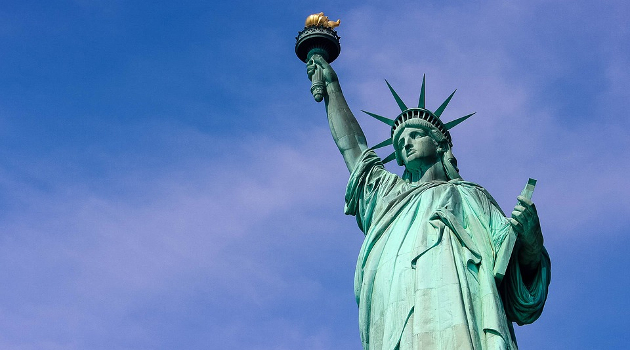This article is written by Manasvee Malviya from the University of Petroleum and Energy Studies, Dehradun. The author exhaustively deals with the statehood movement for Washington DC.
Table of Contents
Introduction
In 1776, the United States was declared independent from British rule. The founding leaders of the nation desired that the new national capital must be founded on a federal district and should not be part of any state. Thus, the creation of the district was named after the explorer Columbus and the city was named after the first President of the US, George Washington. To follow the ideals of American democracy, statehood needs to be instituted. Residents of Washington have been denied the right to participate in the democracy and have been deprived of the basic right – to have their voice and their votes to be heard in Congress. The residents of Washington DC demand full equality and autonomy as the 51st state.
History of Washington DC
Washington DC is the ancestral home of Anacostans. They were driven out of their land by the British colonists and became part of Maryland and Virginia. In 1790, the Residence Act was passed; the Act approved the creation of new territory as the new national capital – the District of Columbia.
District of Columbia Organic Act, 1801
This Act was enacted according to Article 1, Section 8 of the American Constitution, which incorporated the counties of Washington and created the district of Columbia from Maryland and Virginia. This was set up according to the constitutional provisions and authority of the Constitution. Thus, Congress presumed control and jurisdiction over the district.
The Act provided the district’s governance and didn’t provide for the voting representation of the residents. Further, this violated the right of representation of the residents, as they were not considered to be part of Maryland or Virginia. The residents had no voting rights in representation in Congress or the Electoral College or the Constitutional amendment.
Furthermore, the Act established Washington’s first municipal charter and allowed the voter to elect a 12 member council headed by the Mayor, elected by the President. In 1820, Congress amended the provision of the Mayor being elected by the President and the power to elect the Mayor was with the voters through direct election.
Retrocession of Alexandria
After the creation of the district of Columbia, it was a topic for national debate and interest. At the same time, the abolitionists were working to free the district of Columbia of slavery. The Virginia General Assembly in 1846 passed a Bill for the retrocession of Alexandria and Alexandria county. The Bill was approved and signed by President James Polk, which returned thirty-six miles of land to Virginia and reinstated the rights of the residents and Congressional representation. The residents of the district of Columbia experienced constitutional neglect and the anger of the residents started to grow as they were denied the necessary rights which existed in every state of the Union.
The Organic Act, 1878
The district continued to be operated under self-governance. The Congress unified the district’s municipal government in 1871 which included Washington City, Washington County and Georgetown. All municipal governments were consolidated into one government, led by the governor and council (appointed by the President) and non-voting delegates of Congress. Due to the budget issues, Congress reformed the government structure and the Organic Act of 1878 was established. This Act lasted almost 100 years. The district of Columbia was governed by three commissioners appointed by the President as municipal corporations.
District of Columbia Home Rule Act
Around the 1950s-1960s, the Civil Rights Movement brought attention to the district of Columbia’s disenfranchisement. Since the beginning of time, the district has been a majority-minority city. The 23rd Amendment was ratified in 1961 which provides, “the district which constitutes the seat of government shall be appointed in the manner prescribed by the Congress, the number of electors of President and Vice President must be equal to the number of Senator and representatives in the Congress to which the district would be entitled if it is a state but not in the circumstances more than the least populous state”. The Commissioner- led government established by the Organic Act of 1878 was replaced in 1967 by the mayor-commission model and nine-member city council (both appointed by the President).
Further, in 1973, the Home Rule Act was passed by Congress, also known as the District of Columbia Self-Governing and Governmental Reorganization Act. The first elected Mayor under this legislation was Walter E. Washington. It provides authority to the residents to directly elect their Mayor and the Council, though there are certain legislative and budgetary restrictions. The restrictions limit the Mayor and the Council to work effectively.
Until the physical copies are delivered to Congress, the Bill passed in the district by the Council and signed by the Mayor cannot become law. After the delivery of the physical copies, a 30 days legislative review is enacted. In case the legislation affects the criminal code, the period of legislative review is 60 days. No other state in the U.S. has to go through this mechanism for enacting legislation. Moreover, the budget of DC has to be sanctioned by Congress and then by the President of the United States.
Modern Statehood movement
The home-rule was established in Washington DC. In the 1990s, the district started electing the shadow members of the Congress, although these positions should not be confused with the non-voting delegates of the DC. Since 1971, the district has consistently had non-voting delegates. The only difference between the shadow members and the non-voting delegate is that shadow members are not recognized by the federal government but the latter is recognized by the federal government.
The district of Columbia in the year 1993 introduced a statehood Bill – the New Columbia Admission Act. The Bill was defeated by a vote of 153/277 in the House of Representatives. Over the years several attempts have been made to grant congressional voting representation, like the D.C. House Voting Rights Act and the District of Columbia House Voting Rights Act, 2007.
Recently to secure statehood in the district, the Washington DC Admission Act has been passed by the district. First time in 27 years, the statehood bill was considered on the floor of the House of Representatives and it is the first time that the Bill passed both the House and Senate. The Bill was introduced by Delegate Eleanor Holmes Norton on January 3, 2019. On February 28 Senator Thomas Carper introduced Companion Bill to the H R 51. Further, the House Committee on February 11, 2020, held a mark upon a separate statehood bill, H.R. 5803. H.R.5803 was introduced on February 7, 2020, by Eleanor Holmes Norton. This was similar to H.R. 51, but this Bill provided details regarding the statehood transition in DC. This Bill will admit Washington DC as the 51st state of the United States on the Doctrine of equal footing with the other States in all respects. The Bill, on June 26, 2020, passed the House by votes 232/180.
Provision to admit a new State
Article IV, Section 3, clause 1 of the U.S Constitution deals with the admission clause. The Article provides power to congress to form a new state. The admission clause under the U.S Constitution reads that – “The New States may be admitted by the Congress into this Union, but no new State shall be formed or erected within the Jurisdiction of any other State; nor any State is formed by the junction of two or more States, or Parts of States, without the Consent of the Legislatures of the States concerned as well as of the Congress”.
In 1959, Hawaii was the 50th state to be admitted to the Union, marking the last time statehood was subjected to votes in the House and Senate. The Congress confers power under this provision to admit new states, where the new state is formed from the states already in existence with the consent of the existing states. The admission clause is subjected to objections on the grounds that the few existing states wouldn’t consent for a state to become a part of a larger existing state, and thus the existing states will become more and more powerful over the period. Like, for the formation of Maine, Massachusetts consented and most interestingly, at the time of the formation of West Virginia, Virginia was considered to be the consenting state.
In American history, the power given to Congress to admit new states has played a significant role. Only 13 states are ratified as per Article VII whereas all the remaining 37 states were added by the Congress to the Union. The power provided to congress is an important one, yet there is no guidance in the Constitution as to how it should be exercised. Further, the admission clause is not defined explicitly, it is to be either interpreted from the case laws or from the practice of Congress in admitting states, that is, from 1791 with Vermont and ending in 1959 with Alaska and Hawaii.
The Admission clause provides that for admitting a new state it requires at least one Act Congress. However, Congress has always followed a more complex process for admitting a new state. In several cases of admitting new states, Congress first passed an Enabling Act. The Enabling Act of 1934 authorizes the population of the territory to summon a constitutional convention in order to draft a constitution for the proposed state ( new state ) and for applying to Congress to initiate the process of admitting a new state. The Congress specifies the number of conditions which widely vary across time and states, that the proposed new state had to meet for admission.
The foremost issue that the courts face while interpreting the Admission clause is the extent to which it limits the power of Congress to impose conditions for admitting new states. Once the Constitution is drafted of the proposed state, it is sent to Congress, it is the discretion of Congress whether to pass an additional act or resolution admitting the state. The Enabling Act process involves the final approval of the President.
After World War II, the effort to admit Alaska and Hawaii as new states with an equal footing with the other states had strategic importance of the territories whereas, in the statehood movement of Washington, politics played its role.
The doctrine of equal footing
This doctrine applies to the matters of state sovereignty, not the economic, geographic or ecological conditions of the states. The equal footing doctrine was first constitutionalized in Pollard’s Lessee v. Hegan (1845). The Supreme Court observed and upheld that in the matters related to the basic sovereignty, all states have ownership of the beds of their navigable waterways because the newly admitted states must be on equal footing with the other existing states. The objective of this doctrine is to ensure that, when a new state is admitted to the union, it has the same ownership rights as the existing states. Further, the Supreme Court applied this doctrine in the case of Coyle v. Smith (1911). The court invalidated the condition in the Oklahoma Enabling Act, 1906, which restrained the ability of new states to move the location of their capital and held that Congress doesn’t have the power to restrict the decisions taken by existing states regarding where to locate their state’s capital. Under this doctrine, Congress can’t control the location of the new admitted state capital.
Constitutionality of statehood movement
The U.S Constitution grants authority to congress to provide statehood and imposes few limits on forming new states out of the existing states. The Constitution doesn’t mention the conditions for achieving statehood or the process of achieving statehood. In the past, Congress has granted statehood through a variety of legislative procedures. The most common procedure selected by the House and Senate is to pass a bill or joint resolution to approve statehood and which is signed by the President. Several events have occurred in the past before the statehood admission, the events include:
- The residents of the proposed state exhibit their belief in the principle of republican government;
- Majority support for the statehood by the residents; and
- The proposed state establishes its capacity to pay the federal costs.
Article 1, Section 8 of the Constitution only sets the maximum size that is not exceeding 10 miles square for the federal districts – the seat of Government of the United States. Congress has the power to redefine the federal district borders. In 1846 the portion west of Potomac was returned to Virginia, now known as Arlington and Alexandria counties.
Why do people of the capital demand statehood
In the United States, the district has its own geographical and political entity, where the residents bear the responsibilities of a citizen. The residents pay taxes and they are citizens with partial rights and privileges of citizenship. The residents of Washington pay taxes more than the 22 states, also, more per capita to the federal government and yet they have no votes in the Congress.
The district also faces issues with the interference of Congress with the local laws, fundings and operations. Interestingly, the residents are citizens of the United States but neither they have the same rights nor are they treated as citizens. The residents of DC want statehood and equal treatment like the other 50 states of the United States. The residents have contributed like all the other states to the nation. Since World War I, the residents have been serving the nation and fighting for American values, few of them never made home and more than 11,000 residents are in the military, serving the nation, yet they have no voting rights in the place of residence. DC has a delegate in the US House of Representatives who can draft legislation but have no voting right over legislation. The need for statehood can be dealt with in 2 folds.
Racial inequality – American democracy
Washington DC is a city with a majority of the black population. Where American democracy white voters are overrepresented at the expense of the black voters and the other voters. The structure provides the Senate less voting power for the coloured voters than the white voters. In this case, Washington DC has zero representation in Congress. The lack of representation is disenfranchisement and oppression of the Black Community in the United States. The admission of the state will make Washington DC the only plural Black state in the Country and will make congress more active towards the need of fixing racial democracy.
Equal treatment
On January 6, 2021, the supporters of the Former President Donald Trump attacked the Capitol, where the DC Police Department supported the federal authorities to restore the capital despite not having full representation in Congress. This creates a clear vision of the need to control its own national guard. Currently, to take any actions the order must come from the White House.
Arguments for statehood of Washington DC
- Washington DC is larger than the states of Wyoming and Vermont and almost all the other states.
- Washington DC has a population of more than 700,000 and is larger than the states that were at the time of admission, including Hawaii and Alaska.
- In 2016, 86 per cent of the residents voted in the favour of statehood.
- The residents pay taxes but have no representation with the vote in Congress.
- In DC, there are civil rights issues, because of the black plurality. Statehood in the state is essential as the residents are disenfranchised- lack of representation in Congress.
- With no representation votes in Congress, it is violating the principles of the American Revolution that were fought. Thus, in the Democratic world, Washington DC is the only capital where the residents have no voting rights for representation.
- The admission of Washington DC would put the state near the top of all states in terms of median income. Further, it ranks near the highest rate of per capita – federal income taxes.
Arguments against statehood for Washington DC
- The territorial area of Washington is smaller than Rhode Island- the smallest state.
- Making Washington DC a state will violate the intention of the nation’s founding fathers. In the first place, the framers never intended to have small federal jurisdiction surrounded by a single state.
- The admission of the state is against the 23rd amendment. The constitutional amendment gives 3 electoral votes.
- Further, it was argued that the residents are too corrupt and financially dependent on the federal government.
- The admission of the state is likely to favour one political party and the balance of power will be on the side of the Senate.
- The federal government will have unmoderated influence by the State, as it is housed there.
Alternative solutions proposed
Virginia has managed to resolve the problem of no representation in Congress, despite being questioned for its constitutionality and had gained representation for the residents of Alexandria. This led to an alternative resolution for the statehood movement of Washington DC and suggestions were made that Maryland should proceed with the same actions and should reinstate the previously held territory. This idea was suggested for the first time in 1839, the congressmen suggested the retrocession of a part of the district into the territory of Maryland, however, without any benefit. Further, in 2001 the republican lawmakers drafted and sponsored a bill that would return all donated territories to Maryland, and it would grant two more votes in Congress. Apart from this, the only remaining territories would be the ones included in the National capital area, though the bill failed to pass. If Maryland would try to annex the territories, certain problems would arise as it would be considered unconstitutional, similar to the case of Virginia. The residents of Maryland are not in favour of reinstatement of the district’s territories. Although, this can be done through constitutional amendment without the consent of the residents of the state.
The residents of Washington DC can acquire representation in Congress if they are treated as the residents of Maryland. This could be achieved through the District of Columbia Voting Right Restoration Act, 2004, without distributing the organization of the cities.
Conclusion
On June 26, 2020, the bill was passed by the House of Representatives to make Washington DC the 51st State with a vote of 232/180. The state will be unusual in several ways while addressing the question of how should or how can a state function. The residents of Washington have been deprived of rights since the formation of the district and Congress has failed to provide a remedy for the injustice suffered by the residents. Therefore, it is impossible to ignore the concerns of the residents, it’s time to take a stand for the residents of Washington DC.
References
- https://indianexpress.com/article/explained/explained-obstacles-washington-dc-51st-us-state-7286179/
- https://jscholarship.library.jhu.edu/bitstream/handle/1774.2/63877/McAllister-Capstone%20Project-2021.pdf?sequence=1
- https://www.dcvote.org/resources/
LawSikho has created a telegram group for exchanging legal knowledge, referrals, and various opportunities. You can click on this link and join:
 Serato DJ Crack 2025Serato DJ PRO Crack
Serato DJ Crack 2025Serato DJ PRO Crack











 Allow notifications
Allow notifications



